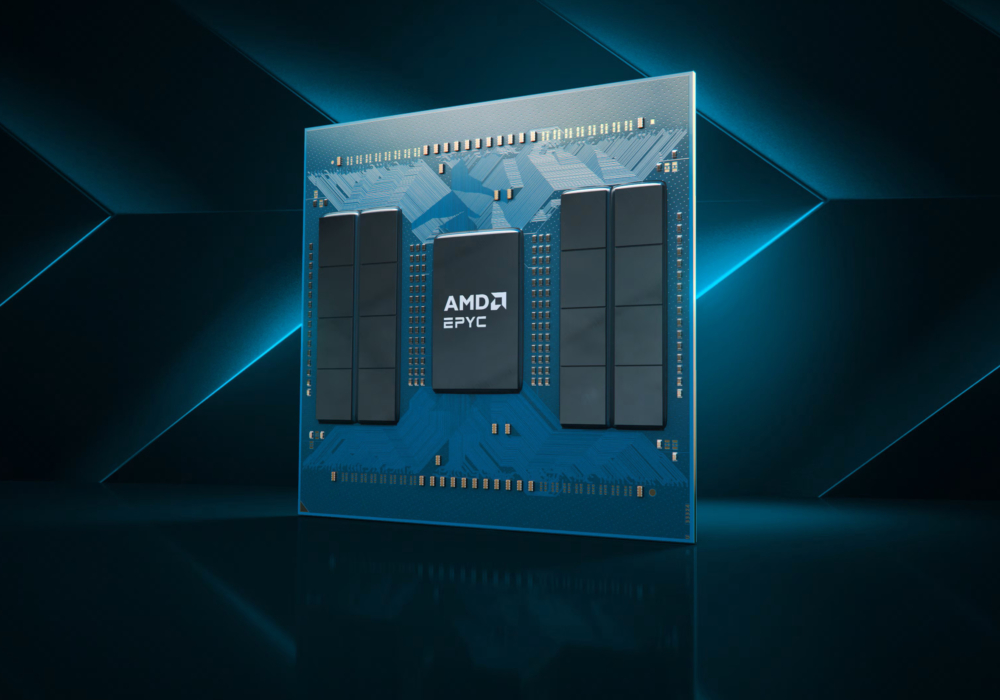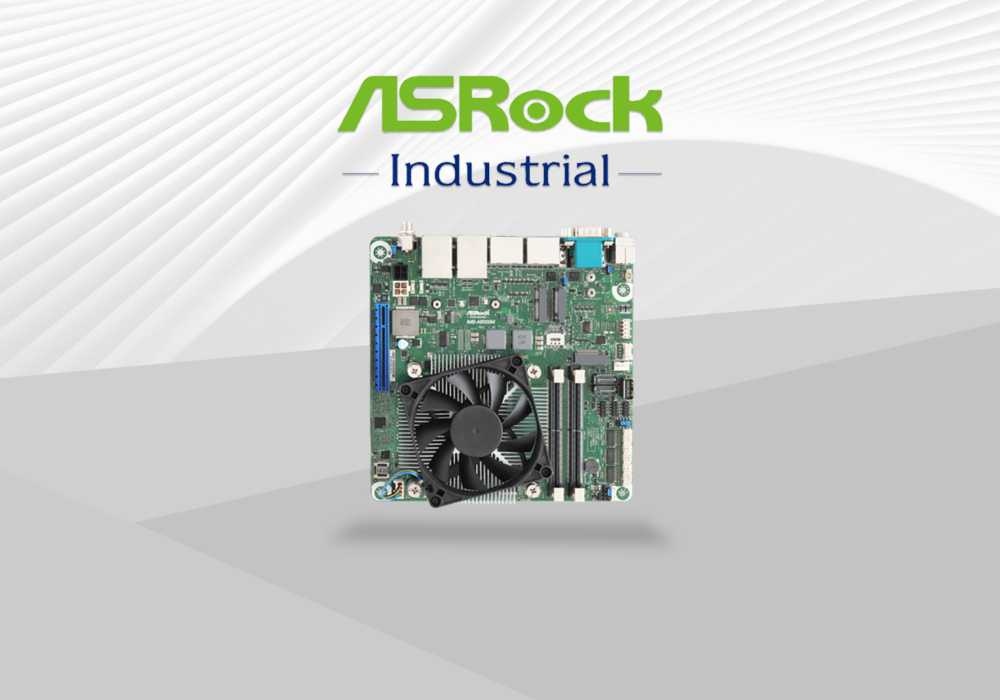In this article:
- Introduction
- Understanding COM-based Single Board Computers
- Benefits of COM-based SBCs
- Extended Product Lifetime
- Custom COM Carrier Boards
- Applications of COM-based Single Board Computers
- Conclusion
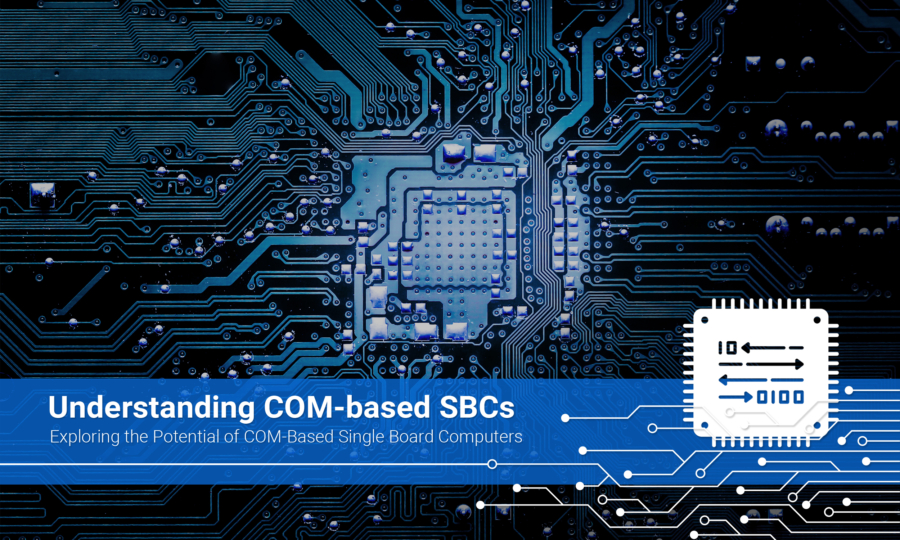
Introduction
In the ever-evolving landscape of computing technology, COM-based single-board computers (SBCs) have emerged as versatile and powerful solutions.
A Computer-on-Module (COM)–based Single Board Computer (SBC) seamlessly integrates the adaptability of a standard COM with a feature-rich baseboard. This amalgamation introduces additional I/O, expansion sockets, power supplies, and I/O connectors, resulting in a product that is not only highly flexible and expandable but also brimming with features. This unique combination ensures adaptability to a broad spectrum of applications, promising an extended lifecycle for optimal longevity.
This article aims to explore the intricacies of COM-based SBCs, shedding light on their benefits and diverse applications.

Understanding COM-based Single Board Computers
COM, short for Computer-on-Module, represents a compact and modular approach to embedded computing. COM-based Single Board Computers encapsulate all essential components, such as processor, memory, storage, and connectivity, onto a single board. This modular design provides flexibility and scalability, making them ideal for various applications.
Benefits of COM-based SBCs
- Modularity and Scalability:
- One of the primary advantages of COM-based SBCs is their modular design. This allows for easy upgrades and replacements, reducing downtime and extending the lifespan of the system. You can swap out one COM for another in the exact same form factor but with a different CPU. This allows your system to be easily upgraded when software demands increase.
- Extended Product Lifetime:
- If the COM you’re using becomes obsolete, another one can be used in its place easily, with no mechanical changes required to the system. This enables COM-based embedded systems to easily last 20 years, since most of the baseboard electronics usually have much longer lifecycles than the processor and related peripherals contained on the COM.
- Cost-Efficiency:
- By separating the core computing module from the carrier board, businesses can reduce costs associated with development, testing, and upgrades. This modularity also minimizes the need for redesigning the entire system when upgrading components.
- Enhanced Processing Power:
- COM-based SBCs often feature high-performance processors, enabling them to handle complex computing tasks efficiently. This makes them suitable for applications that demand substantial processing power, such as image processing, AI, and industrial automation.
- Compact Form Factor:
- The compact size of COM-based SBCs makes them suitable for space-constrained environments. This is particularly valuable in applications where real estate is limited, such as in-vehicle computing, medical devices, and edge computing.
- Improved Time-to-Market:
- The modular nature of COM-based SBCs streamlines the development process, reducing time-to-market. This is crucial in dynamic industries where rapid deployment of cutting-edge technology is essential for staying competitive. Most new processors are introduced in COMs long before they are available in true single-board computer form. With a COM-based SBC you can upgrade your system with the latest CPU sooner.
Extended Product Lifetime
The primary obstacle encountered by a majority of embedded computer users revolves around the eventual obsolescence of their application’s processor or computer board. Addressing obsolescence proves to be a resource-intensive and costly undertaking, laden with a substantial level of risk. Consequently, the pursuit of eliminating or mitigating obsolescence concerns emerges as an immensely desirable objective.

A product rooted in a conventional Single Board Computer (SBC) typically incorporates a processor that is, at the very least, two years old or even older upon its market debut. Given the relatively brief lifecycles of processors, customers find themselves compelled to initiate obsolescence mitigation efforts sooner than anticipated. These efforts may include the accumulation of key components through stockpiling or the placement of substantial last-time-buy orders for entire boards, introducing undesired challenges and costs.
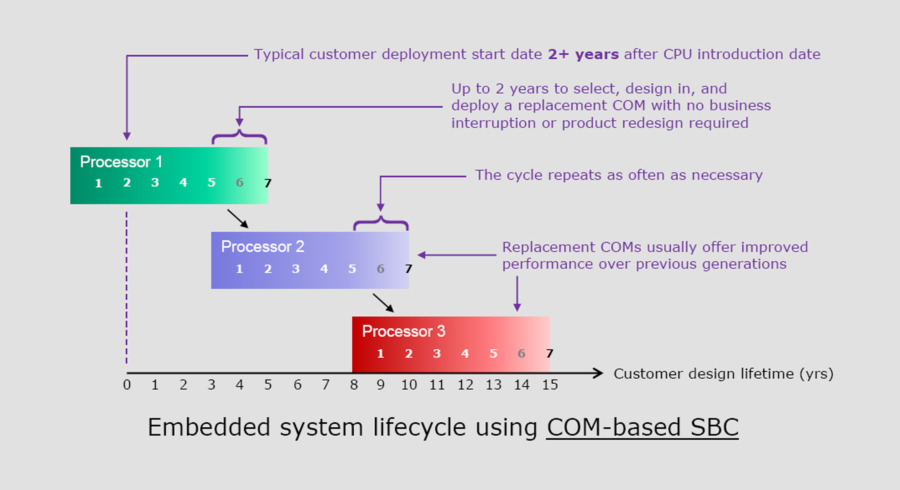
A “single-board computer” engineered with a Computer-on-Module (COM) design typically allows seamless replacement of an older COM with a newer one, requiring minimal adjustments to hardware and only nominal software updates (primarily for newer I/O device drivers). This capability extends both the computer’s lifecycle and the lifespan of the product it serves, aligning them with the longevity of the new COM. As an additional benefit, newer COMs generally deliver enhanced performance at comparable price points and power consumption levels compared to their predecessors.
Custom COM Carrier Boards
An SBC built around a Computer-on-Module (COM) architecture effectively segregates the high-development-cost, high-technical-complexity, and higher-risk CPU circuit from the generally more straightforward and longer-lasting I/O, expansion, and power circuitry.
This design not only enhances the appeal of a COM-based SBC in terms of design simplicity, manufacturability, and sustainability but also substantially mitigates risks for programs with extended life expectancies.
This separation of complexity and risk renders opting for a custom COM-based solution highly attractive in numerous scenarios. The design of a custom COM carrier board can be accomplished in significantly less time and at a substantially lower cost compared to developing a fully custom Single Board Computer (SBC).
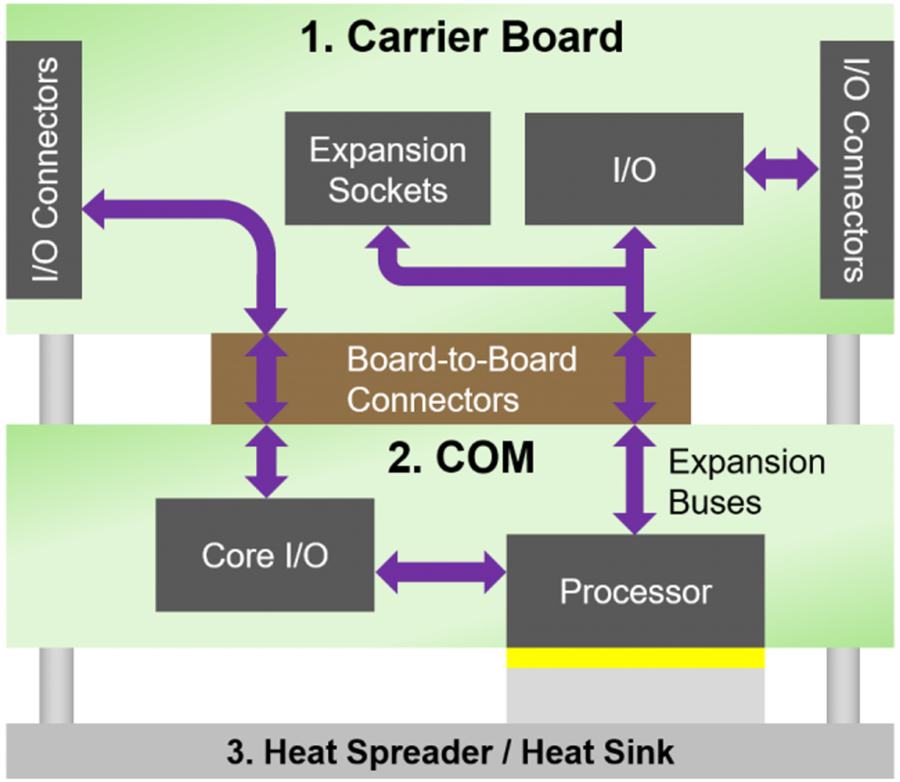
Applications of COM-based Single Board Computers
- Industrial Automation:
- COM-based SBCs find extensive use in industrial automation, where reliability, durability, and performance are paramount. They can control and monitor machinery, process data in real-time, and facilitate communication between different components of an automated system.
- Medical Devices:
- In the healthcare sector, COM-based SBCs power a range of medical devices, from diagnostic equipment to patient monitoring systems. Their compact size and robust performance make them ideal for integration into portable devices and medical instruments.
- Edge Computing:
- With the rise of edge computing, COM-based SBCs play a crucial role in processing data closer to the source, reducing latency and enhancing efficiency. They are deployed in various edge computing applications, such as smart cities, IoT devices, and autonomous vehicles.
- Digital Signage:
- The compact form factor and graphic processing capabilities of COM-based SBCs make them well-suited for digital signage applications. They can drive high-definition displays in retail environments, airports, and public spaces.
- Aerospace and Defence:
In aerospace and defence applications, where reliability and ruggedness are critical, COM-based SBCs are employed in avionics systems, unmanned aerial vehicles (UAVs), and military-grade computing solutions.
Conclusion
In conclusion, COM-based Single Board Computers offer a compelling solution for a wide range of applications, thanks to their modularity, scalability, and performance capabilities. As technology continues to advance, these compact and powerful computing solutions are poised to play an increasingly pivotal role in shaping the future of embedded systems across various industries. Embracing the versatility of COM-based SBCs can undoubtedly unlock new possibilities and efficiencies in the world of computing.








